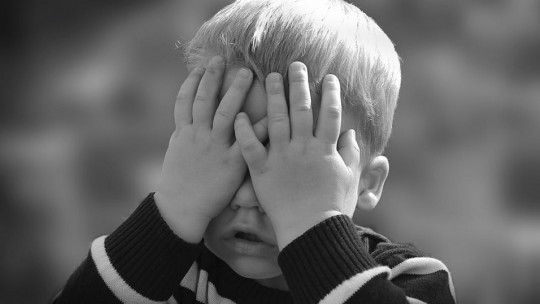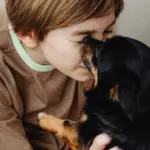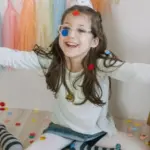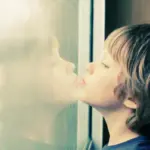
In the vast and complex network of psychopathology, every day and recurrently new disorders or variants of them are reviewed and found. The science of psychology and neurology works to respond to the needs of new treatments and the resolution of increasingly variable psychopathological realities.
Particularly and in recent years, the science of the human mind has stopped at exploring the autism spectrum, a set of disorders grouped together due to their common symptoms and manifestations: difficulties with communication and social interactions and the development of highly developed behaviors or interests. restrictive. Throughout the autism spectrum, there are different and diverse psychopathological forms. One of them is regressive autism presented as an additional enigma.
Regressive autism mainly groups boys and girls who, after a few first years of apparently normative, typical development without any complications, experience a significant loss of skills and functions with respect to social interactions and building personal relationships. This disorder is very disconcerting for both families and professionals and is presented as current scientific evidence.
In this article, we will seek to understand what regressive autism is and what its main symptoms are. We will propose different treatment and support alternatives that, to date, have been found to resolve some of the main warning signs.
What is regressive autism?
Regressive autism is a particular variant of autism spectrum disorder (ASD). It is characterized by a unique pattern of development in which a child, after reaching certain typical developmental milestones during the first years of life, experiences a significant loss of previously acquired skills and functions. This loss can include verbal communication, social skills, motor skills, and other aspects of development.
Parents often first notice signs of regression in the child around 18 to 24 months, although this can vary. Symptoms may appear gradually or abruptly. This regression is what distinguishes regressive autism from other forms of autism, where symptoms usually present from a young age and there is no significant loss of previous abilities.
It is important to note that regressive autism is a part of the autism spectrum, and people who experience it still have a variety of abilities and challenges. Not all children with regressive autism have the same level of regression or the same difficulties, making each experience unique.
Causes and risk factors
Regressive autism has baffled parents, caregivers, and scientists for years due to its enigmatic nature and variety of manifestations. Although there is no single cause that explains why some children experience this developmental regression, several theories and risk factors have been proposed that may contribute to its appearance. These include:
Importantly, the relationship between these factors and regressive autism is complex and not yet fully understood. Not all children with regressive autism have the same genetic or neurological characteristics, nor have they been exposed to the same environmental factors. Furthermore, there are likely to be complex interactions between genetic and environmental factors that contribute to developmental regression.
Symptoms and warning signs
One of the most intriguing and challenging features of regressive autism is the loss of previously acquired skills. Parents and caregivers often notice changes in their children’s behavior and development that make them think something is not right. Here are some of the most common symptoms and warning signs associated with regressive autism:
It is essential to keep in mind that developmental regression is not the same in all children with regressive autism. Some may experience a more significant loss than others. Additionally, it is important to distinguish between regressive autism and other developmental disorders or problems that may have similar symptoms. Early detection of these warning signs is essential to provide appropriate support and treatment. If parents or caregivers notice any of these symptoms in their children, it is advisable to seek medical evaluation and a specialized evaluation in child development to obtain an accurate diagnosis and access early intervention services.
Treatment and support
The diagnosis of regressive autism can pose significant challenges for families, but there is also hope and treatment options available. Early and appropriate care can make a positive difference in the development and quality of life of children with regressive autism. Here we will explore some of the treatment and support strategies that may be beneficial. It is crucial to keep in mind that each child is unique and may respond differently to interventions. A personalized treatment approach, designed in collaboration with healthcare professionals and educators, is essential to ensure the best possible outcome.
1. Early intervention
Early detection and diagnosis are critical to providing effective intervention. Early intervention programs, such as applied behavioral therapy (ABA), speech therapy, and occupational therapy, can help children develop communication skills, social interaction and adaptive behaviors.
2. Speech and communication therapy
Speech therapy may be essential in helping children with regressive autism regain lost communication and language skills. Speech therapists work on the development of expressive and receptive language, as well as non-verbal communication skills.
3. Occupational therapy
Occupational therapy focuses on the development of motor skills and self-care. It can help children with regressive autism improve their motor coordination and skills for daily activities.
4. Behavioral therapy
Behavioral therapy, like ABA, focuses on changing problem behaviors and encouraging appropriate behaviors. It can be especially helpful in addressing repetitive or stereotyped behaviors.
5. Educational support
Children with regressive autism can benefit from a structured and supportive educational environment. Specialized schools and educational programs can be tailored to each child’s individual needs.
6. Emotional and psychological support
We must not overlook emotional support for both children and their families. Understanding the diagnosis and managing stress are important aspects of emotional support.
Conclusions
In conclusion, regressive autism represents an enigmatic challenge in the world of autism spectrum disorder (ASD). This unique variant is characterized by the loss of previously acquired skills in children who had experienced typical development in their first years of life. Although the precise causes of regressive autism are still the subject of research, it is clear that early detection and intervention are crucial.
For families facing this condition, there are treatment and support options that can make a significant difference in the quality of life of their loved ones. Specialized therapies, tailored educational programs, and a personalized approach are powerful tools on this journey.
It is important to note that each individual with regressive autism is unique, and their potential is immense. Awareness, understanding and ongoing support are essential to foster the wellbeing and development of those living with this condition. As we advance the research and understanding of regressive autism, we can offer hope and opportunities to families and those facing this challenge.








